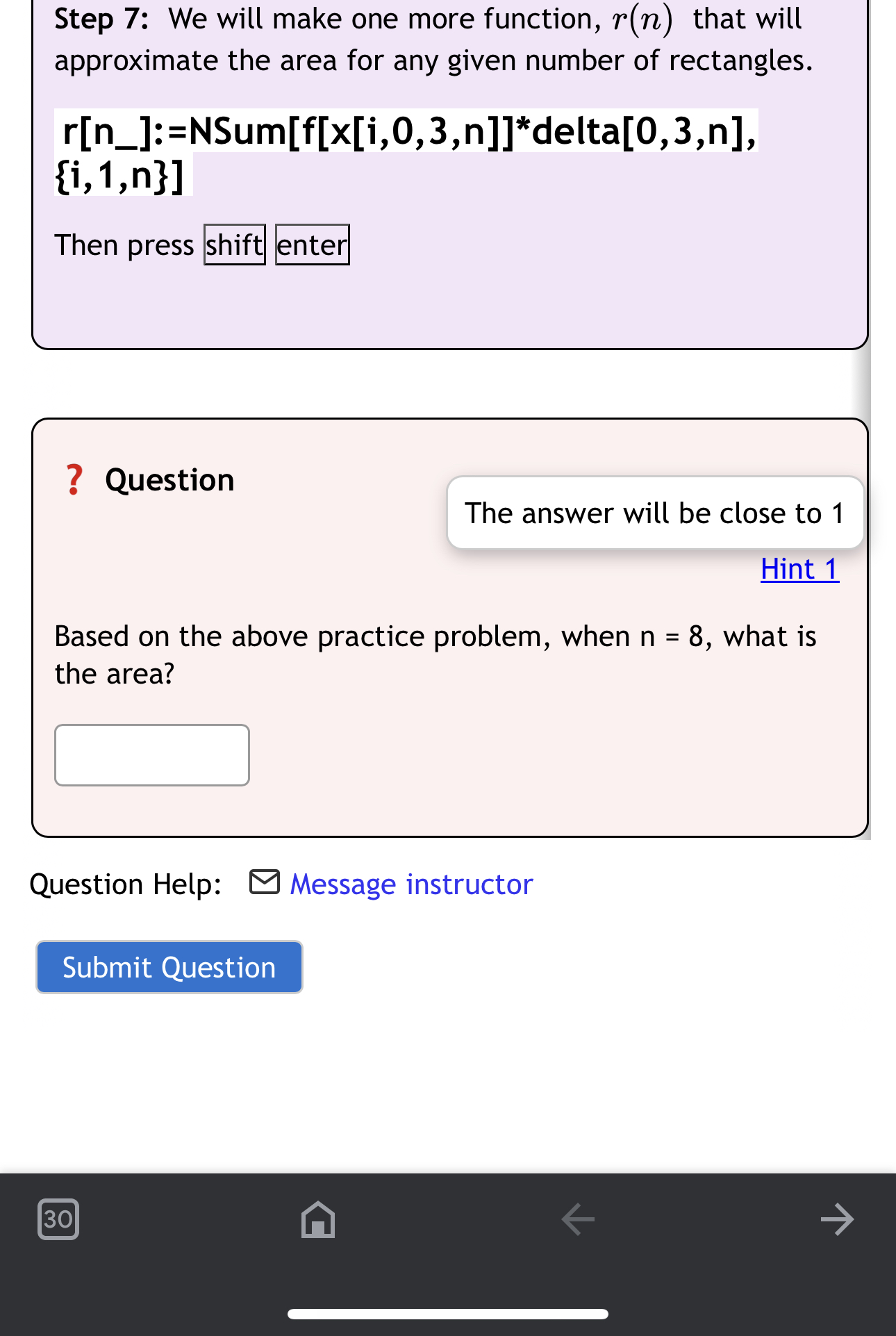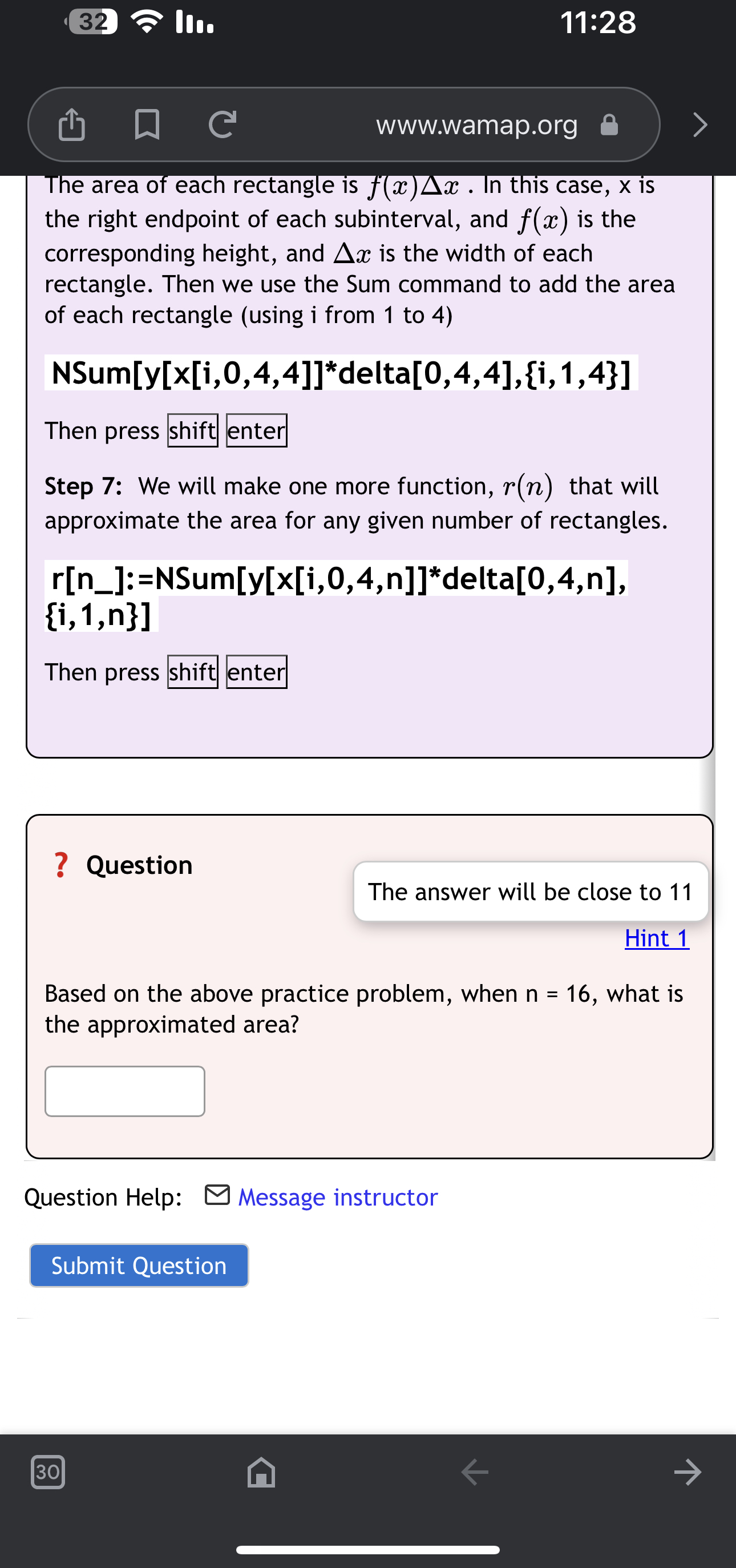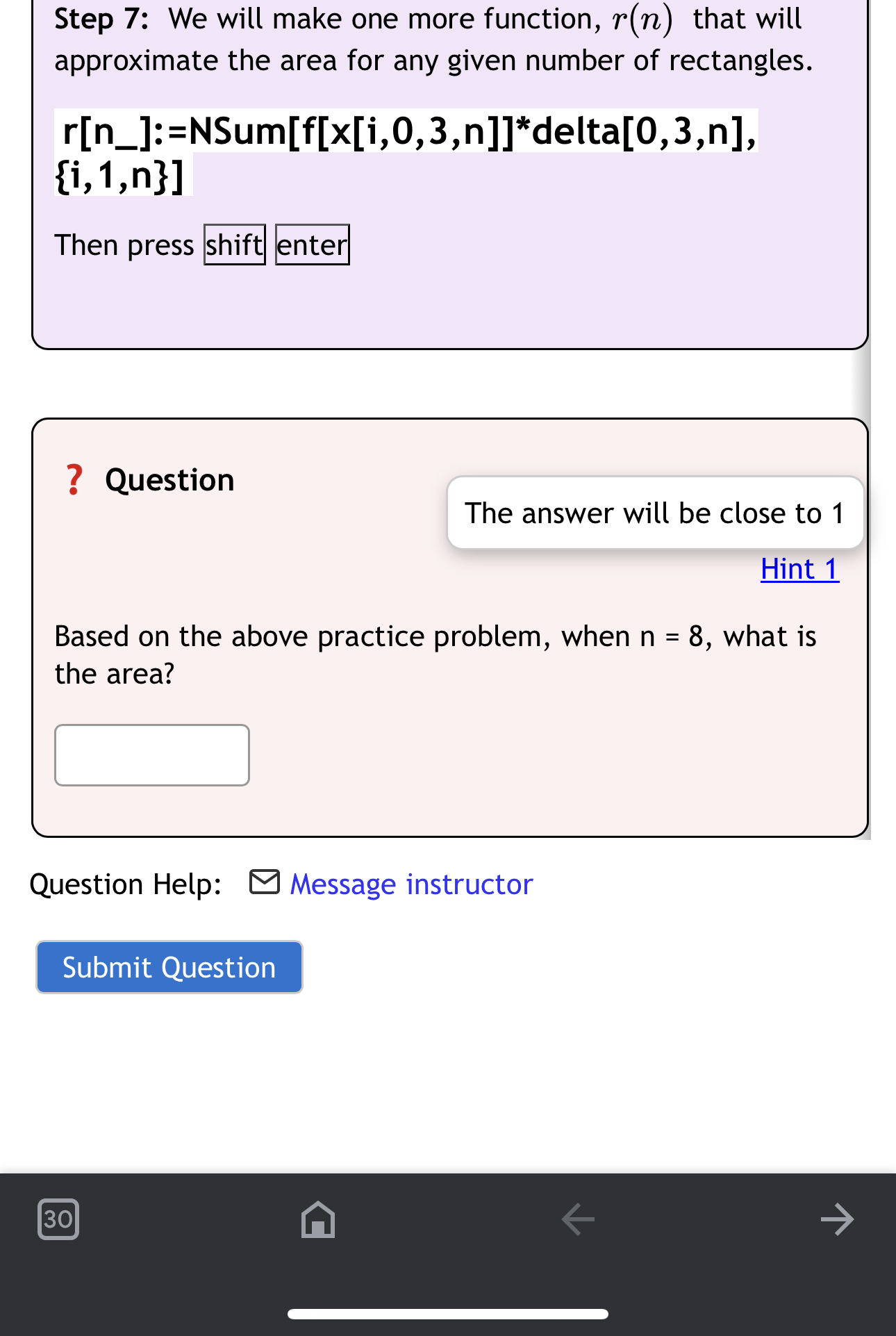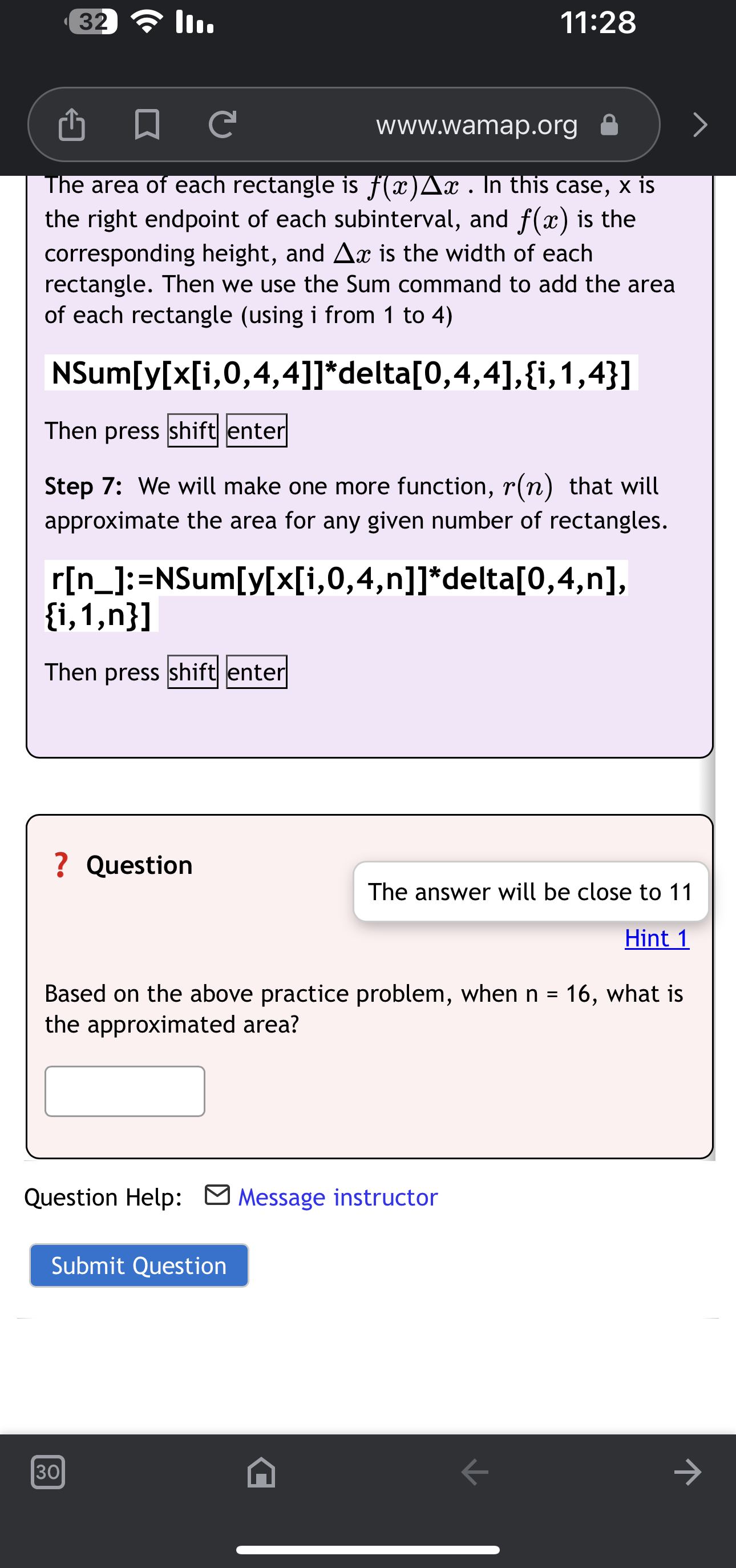Answered step by step
Verified Expert Solution
Question
1 Approved Answer
Step 7: We will make one more function, 'r(n) that will approximate the area for any given number of rectangles. r[n_]:=NSum[f[x[i,0,3,n]]*delta[0,3,n], {i,1,n}] Then press ?




Step by Step Solution
There are 3 Steps involved in it
Step: 1

Get Instant Access to Expert-Tailored Solutions
See step-by-step solutions with expert insights and AI powered tools for academic success
Step: 2

Step: 3

Ace Your Homework with AI
Get the answers you need in no time with our AI-driven, step-by-step assistance
Get Started


